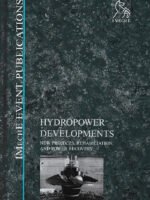Title 40 of the Code of Federal Regulations (CFR), titled “Protection of the Environment,” specifically sections 400-424, addresses regulations pertaining to hazardous waste management under the Environmental Protection Agency (EPA) in the United States. This segment of Title 40 CFR focuses on the comprehensive framework for managing hazardous wastes to protect human health and the environment from potential harm.
Key areas covered in Title 40 CFR sections 400-424 include:
- Hazardous Waste Identification: Regulations for identifying and classifying hazardous wastes based on their characteristics (ignitability, corrosivity, reactivity, toxicity) or listing specific wastes as hazardous due to their composition or origin.
- Generator Requirements: Requirements for entities that generate hazardous waste, including standards for waste accumulation, labeling, storage, and reporting. This includes guidelines for small quantity generators (SQGs) and large quantity generators (LQGs).
- Transportation of Hazardous Waste: Rules governing the transportation of hazardous wastes from the generator site to treatment, storage, or disposal facilities (TSDFs). This includes packaging, labeling, manifesting, and tracking requirements to ensure safe transport and compliance with federal regulations.
- Treatment, Storage, and Disposal Facilities (TSDFs): Regulations for TSDFs that manage hazardous wastes, including requirements for facility design, operation, contingency planning, and closure to minimize risks to human health and the environment.
- Land Disposal Restrictions: Restrictions on the land disposal of hazardous wastes to prevent contamination of soil, groundwater, and surface water. This includes treatment standards and prohibitions on certain hazardous wastes from being land disposed without adequate treatment









Be the first to review “Code of Federal Regulations, Title 40 Protection of the Environment 400-424, Revised as of July 1, 2023”